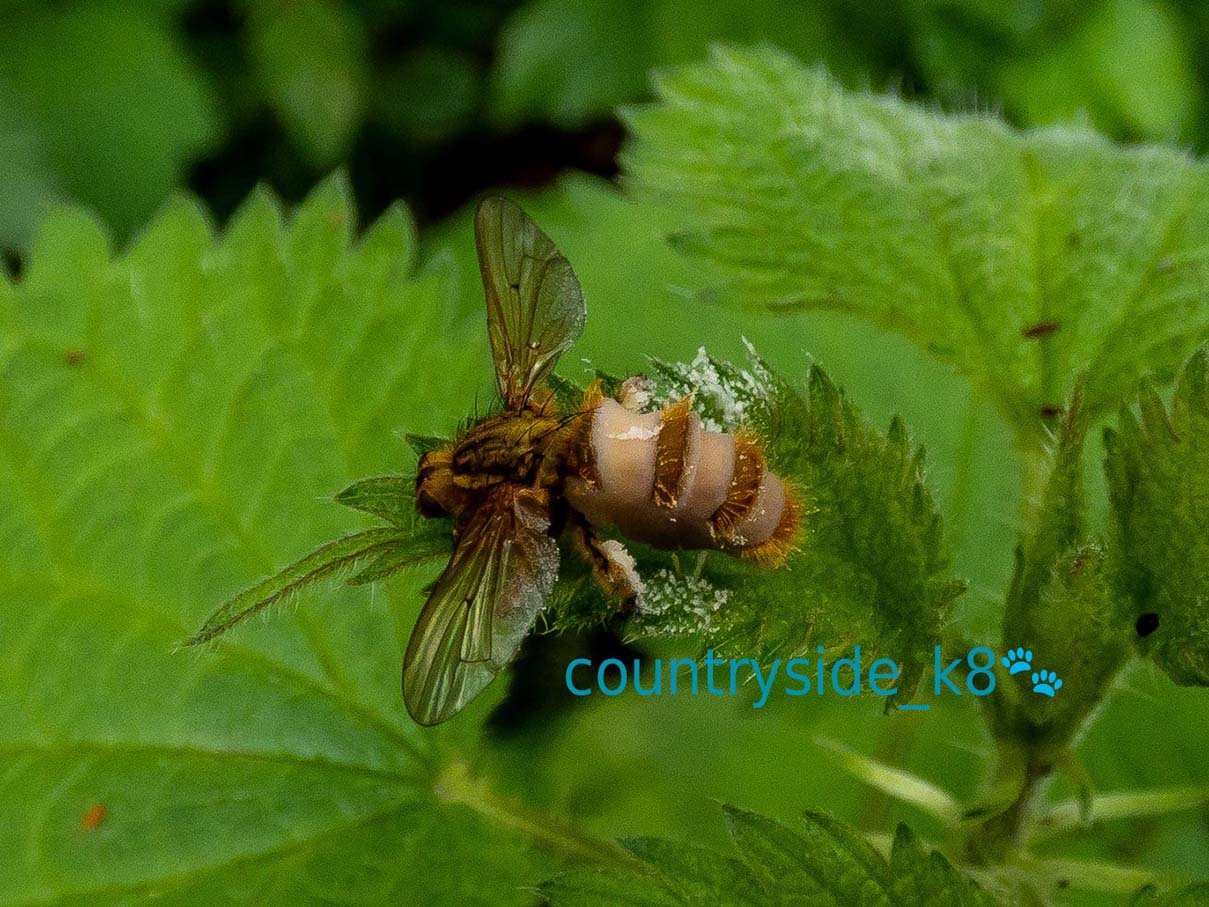
Entomophthora muscae
Fly Death Fungus
Latin name: Entomophthora muscae
Entomophthora muscae or Fly Death Fungus is a pathogenic fungus which causes a fatal disease in flies. The word Entomophthora means “insect destroyer.”
There are over 100 species in this genus of fungi that infect various types of insects.
Outbreaks of infection with Entomophthora muscae tend to occur in the spring and autumn. Once infected the fly dies in about five to seven days. When it is critically ill, it tends to crawl to a high point, often called “summit disease.” Here it will straighten its hind legs and open its wings, a behaviour that ensures that the fungal spores are dispersed as widely as possible. Some three hours later, conidiophores start to develop and a new shower of conidia is initiated.
Most flies die a few hours before nightfall. Since the fungus needs higher humidity, which typically occurs at night, for sporulation, this timing improves the chances the fungus will have the right environmental conditions to produce conidia. However, if conditions are not conducive for sporulation, the fungal holdfasts ensure the dead insect will remain hanging there for a while and the pathogen can persist in the infected host until conditions improve.
The infection has been observed in adult flies in the families Muscidae, Calliphoridae, Culicidae Drosophilidae, Sarcophagidae, Scathophagidae, Syrphidae and Tachinidae.
Widespread and fairly frequent in Britain.
Created: 9 May 2019 Edited: 9 May 2019
Mist, Mines and Ruins
Own label and private label building products
We produce, brand and supply for some of the biggest names in the industry. Read more...


